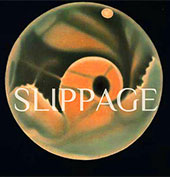Slippage :: Putting the A in STEAM
 While science, technology, engineering and mathematics – STEM – is the recent focus in education, I am pleased to find pockets where the value of arts is retained: STEAM. The online literary/arts journal [Slippage] is “dedicated to the discovery and publication of unique, creative pieces fusing art with science . . . to bridge the gap between the two worlds of art and science by inspiring artists to think about science and encouraging scientists to transcend rote reductionism.”
While science, technology, engineering and mathematics – STEM – is the recent focus in education, I am pleased to find pockets where the value of arts is retained: STEAM. The online literary/arts journal [Slippage] is “dedicated to the discovery and publication of unique, creative pieces fusing art with science . . . to bridge the gap between the two worlds of art and science by inspiring artists to think about science and encouraging scientists to transcend rote reductionism.”
[Slippage] journals are available full access online, publishing scientific literary writing in poetry, fiction, and creative nonfiction, artwork, and nonfiction science studies/research papers and science articles/nonfiction, with the note that the editors are looking for “scientific studies testing artistic hypotheses, or that are art-related in nature.” The editors have provided brief explanations of their definition of “scientific literary writing (and its artistic equivalent)” and “good scientific writing (nonfiction).”
In addition, the [Slippage] website features a “Need Inspiration?” page that would be better labeled “The Value of Arts in the World of Science.” Okay, maybe that’s too long. But the page provides a list of “Did you know. . . ” with specific connections between the arts and science, a brilliant comment from Dr. Robert Root-Bernstein, Professor of Physiology at Michigan State University, which names artists and their contributions to science and the closing comment that “the modern world would not be possible without the insights and inventions of artists. We lose sight of this conclusion at our peril. . . “
There is also a list of science/art readings, artists, writers, influential figures and organizations, scientific theories and concepts, and “sister genres.” It’s a resource useful for helping connect artists to the sciences and vice versa, and a great resource for teachers working with students in one discipline to help them see the value in crossing over and ways in which to do so – the publication itself a living example of how this can be achieved.




